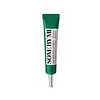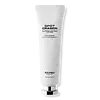What's inside
What's inside
 Key Ingredients
Key Ingredients

 Benefits
Benefits

 Concerns
Concerns

 Ingredients Side-by-side
Ingredients Side-by-side

Melaleuca Alternifolia Leaf Water
AntimicrobialCentella Asiatica Extract
CleansingGlycerin
HumectantWater
Skin ConditioningButylene Glycol
HumectantNiacinamide
SmoothingPanthenol
Skin ConditioningArtemisia Princeps Leaf Extract
Skin ConditioningLavandula Angustifolia Extract
Skin ConditioningRosmarinus Officinalis Extract
AntimicrobialOriganum Vulgare Flower/Leaf/Stem Extract
Skin ConditioningThymus Vulgaris Extract
PerfumingSodium Hyaluronate
HumectantSaccharide Isomerate
HumectantFructan
Skin ConditioningSalicylic Acid
MaskingMadecassoside
AntioxidantMadecassic Acid
Skin ConditioningAsiaticoside
AntioxidantAsiatic Acid
Skin ConditioningAllantoin
Skin ConditioningProtease
ExfoliatingLipase
Skin ConditioningAdenosine
Skin ConditioningLactobionic Acid
BufferingCitric Acid
BufferingSorbitan Oleate
EmulsifyingCaprylyl/Capryl Glucoside
CleansingPolyisobutene
Microcrystalline Cellulose
AbsorbentCellulose Gum
Emulsion StabilisingGlyceryl Acrylate/Acrylic Acid Copolymer
HumectantMagnesium Aluminum Silicate
AbsorbentSodium Acrylate/Sodium Acryloyldimethyl Taurate Copolymer
Emulsion StabilisingAmmonium Acryloyldimethyltaurate/Vp Copolymer
1,2-Hexanediol
Skin ConditioningBenzyl Glycol
SolventEthylhexylglycerin
Skin ConditioningRaspberry Ketone
MaskingDisodium EDTA
Mentha Piperita Oil
MaskingMelaleuca Alternifolia Leaf Water, Centella Asiatica Extract, Glycerin, Water, Butylene Glycol, Niacinamide, Panthenol, Artemisia Princeps Leaf Extract, Lavandula Angustifolia Extract, Rosmarinus Officinalis Extract, Origanum Vulgare Flower/Leaf/Stem Extract, Thymus Vulgaris Extract, Sodium Hyaluronate, Saccharide Isomerate, Fructan, Salicylic Acid, Madecassoside, Madecassic Acid, Asiaticoside, Asiatic Acid, Allantoin, Protease, Lipase, Adenosine, Lactobionic Acid, Citric Acid, Sorbitan Oleate, Caprylyl/Capryl Glucoside, Polyisobutene, Microcrystalline Cellulose, Cellulose Gum, Glyceryl Acrylate/Acrylic Acid Copolymer, Magnesium Aluminum Silicate, Sodium Acrylate/Sodium Acryloyldimethyl Taurate Copolymer, Ammonium Acryloyldimethyltaurate/Vp Copolymer, 1,2-Hexanediol, Benzyl Glycol, Ethylhexylglycerin, Raspberry Ketone, Disodium EDTA, Mentha Piperita Oil
Water
Skin ConditioningKaolin
AbrasiveBenzoyl Peroxide 2.5%
Hydroxyethyl Behenamidopropyl Dimonium Chloride
Butyrospermum Parkii Butter Extract
Skin ConditioningEuphorbia Cerifera Wax
Bentonite
AbsorbentPropylene Glycol
HumectantBisabolol
MaskingAllantoin
Skin ConditioningSodium Citrate
BufferingLaureth-4
EmulsifyingCaprylyl Glycol
EmollientMagnesium Aluminum Silicate
AbsorbentXanthan Gum
EmulsifyingPhenoxyethanol
PreservativeEthylhexylglycerin
Skin ConditioningWater, Kaolin, Benzoyl Peroxide 2.5%, Hydroxyethyl Behenamidopropyl Dimonium Chloride, Butyrospermum Parkii Butter Extract, Euphorbia Cerifera Wax, Bentonite, Propylene Glycol, Bisabolol, Allantoin, Sodium Citrate, Laureth-4, Caprylyl Glycol, Magnesium Aluminum Silicate, Xanthan Gum, Phenoxyethanol, Ethylhexylglycerin
 Reviews
Reviews

Ingredients Explained
These ingredients are found in both products.
Ingredients higher up in an ingredient list are typically present in a larger amount.
Allantoin is a soothing ingredient known for its protective and moisturizingg properties. Because of this, it is often added to products with strong active ingredients.
Studies show higher concentrations of this ingredient can promote wound healing.
Though it can be derived from the comfrey plant, allantoin is produced synthetically for cosmetic products to ensure purity.
Learn more about AllantoinEthylhexylglycerin (we can't pronounce this either) is commonly used as a preservative and skin softener. It is derived from glyceryl.
You might see Ethylhexylglycerin often paired with other preservatives such as phenoxyethanol. Ethylhexylglycerin has been found to increase the effectiveness of these other preservatives.
Magnesium Aluminum Silicate is a type of silica. It comes from naturally occuring minerals such as silicate ores and clay.
Magnesium aluminum silicate is used for enhancing texture and as an absorbent. Due to its large molecular size, it is unable to be absorbed into the skin.
Like other types of silica, this ingredient can be used to thicken a product. As an absorbent, it may be used to absorb extra water or help prevent clumping.
Although “aluminum” in an ingredient name can raise red flags for some consumers, the form and usage context matter significantly. For typical topical applications, there is no substantial evidence of health risks - such as cancer, neurotoxicity, or systemic “aluminum overload.”
Learn more about Magnesium Aluminum SilicateWater. It's the most common cosmetic ingredient of all. You'll usually see it at the top of ingredient lists, meaning that it makes up the largest part of the product.
So why is it so popular? Water most often acts as a solvent - this means that it helps dissolve other ingredients into the formulation.
You'll also recognize water as that liquid we all need to stay alive. If you see this, drink a glass of water. Stay hydrated!
Learn more about Water